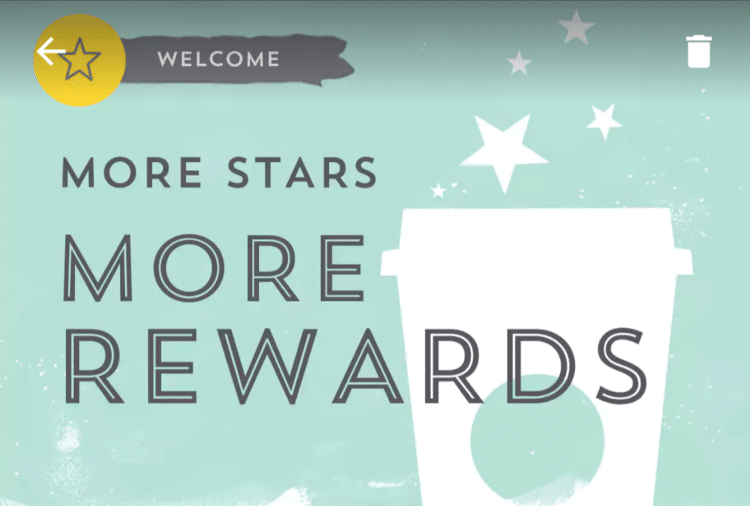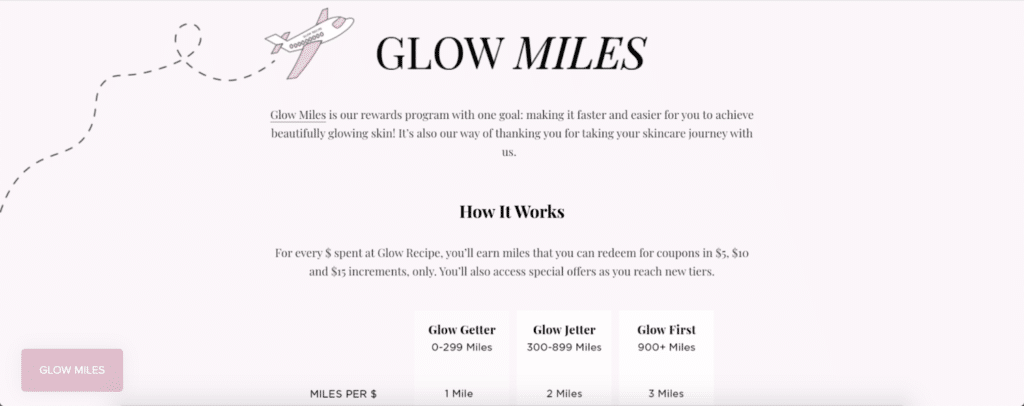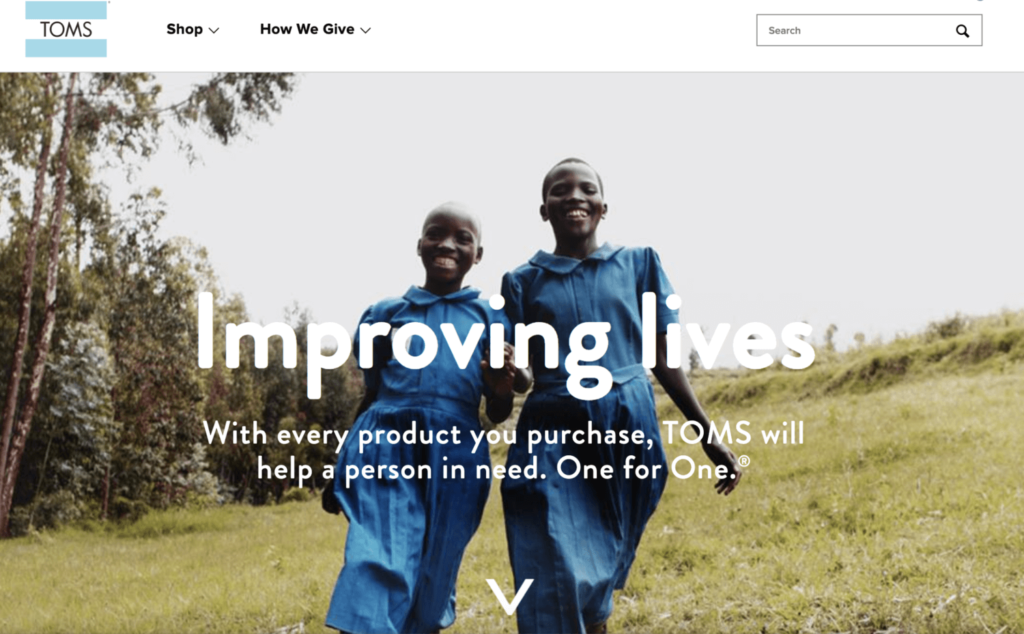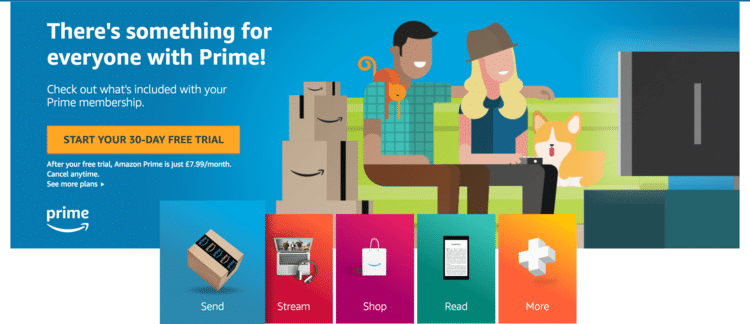Five common types of loyalty programs and how to use them
There are many different types of loyalty programs you can choose from. Listed below are the most common ones plus some customer loyalty program ideas from businesses already using them successfully.
1. Point programs

Loyalty point programs let customers accumulate points that they can redeem for rewards and free products or services.
This is one of the most common types of loyalty program and often uses a punch card system.
Companies like Starbucks have gone above and beyond to make their program more exciting and stand out from the competition by making it digital and by providing more unique rewards.
Not only do Starbucks rewards members gain points but they can also use the app to place orders, pay for orders and even stream music.
This works well with Starbucks’ brand values and target audience, who will be on the hunt for a morning boost on their way to work or having a hard earned break from shopping expeditions.
All of this helps to reinforce Starbucks as a lifestyle enhancement, reflecting the company’s goals and values.
2. Tiered loyalty programs

Tiered programs are similar to point programs in that they usually allow customers to gain points with their purchases.
But the difference here is that the customer’s status as an advocate for your brand will increase as they accumulate more points, such as is the case with cosmetics brand, Glow Recipe.
Depending on the customer’s tier, they are eligible for various rewards including free gifts, discounts, early access to new products and exclusive voting rights on products.
Using tiers in reward programs ensures there’s true value for the customer, regardless of whether they choose to purchase once a year, once a month or daily.
Furthermore, from the name of the loyalty program itself to the witty names of each customer tier: “Glow-Getter”, “Glow-Jetter” and “Glow-First”, Glow Recipe have packed their branding into every aspect of their Glow Miles program.
Customers instantly feel that the rewards program is a natural extension of the rest of the Glow Recipe website and brand.
3. Value-based loyalty programs

If you know that your customers have strong beliefs and values around corporate social responsibility issues, then you may find that a value-based program is best for you and them.
These programs offer customers non-monetary rewards like charity donations, so that you can connect with them on a deeper level and build a strong ethical relationship with them.
Popular footwear brand TOMS has perfected this with its ‘Improving Lives’ campaign, which promises to donate a pair of shoes to communities in undeveloped countries for every product purchased by its customers.
4. Omnichannel loyalty programs

In today’s complex world of retail where customers have access to any number of touchpoints with your brand – from two to five to ten – loyalty programs can no longer be single channel efforts if they’re truly going to succeed.
By enabling your customers to accumulate points, rewards and bonuses whether they choose to buy from you online or in store, they’ll be much more likely to join your program and keep coming back to buy more from you. Providing members with unique ways to amass and use loyalty rewards points will not only help your loyalty program stand out from the crowd but will also help drive growth and retention.
North Face’s VIPeak Rewards Program is a great example of omnichannel loyalty done well, as it allows members to earn points when buying from their website and brick and mortar stores, as well as when participating in North Face events, checking in at designated store locations and even when downloading their app.
5. Paid loyalty programs

Paid loyalty programs require members to pay for access to special services, discounts or unique opportunities – either monthly or yearly.
These programs make your customers feel exclusive but the rewards must be worth the expense of their membership in order for it to be successful.
With over 1.5 million US subscribers, Amazon’s Prime Membership is easily one of the most successful e-commerce loyalty programs.
In return for a yearly membership cost, customers are offered multiple free delivery options (including same day delivery), music and video streaming services, as well as early access to products included in limited-time flash sales, such as lightning deals and offers running on Amazon Prime Day.

Further Reading
Loyal Not Loyal Research Report
E-Commerce for Millennials: How to Gain Their Loyalty
5 Ways to Build In-Person Loyalty in a World of E-Commerce
7 Customer Loyalty Programs That Actually Add Value
How to Calculate the Cost of a Loyalty Program and Why It’s Important
